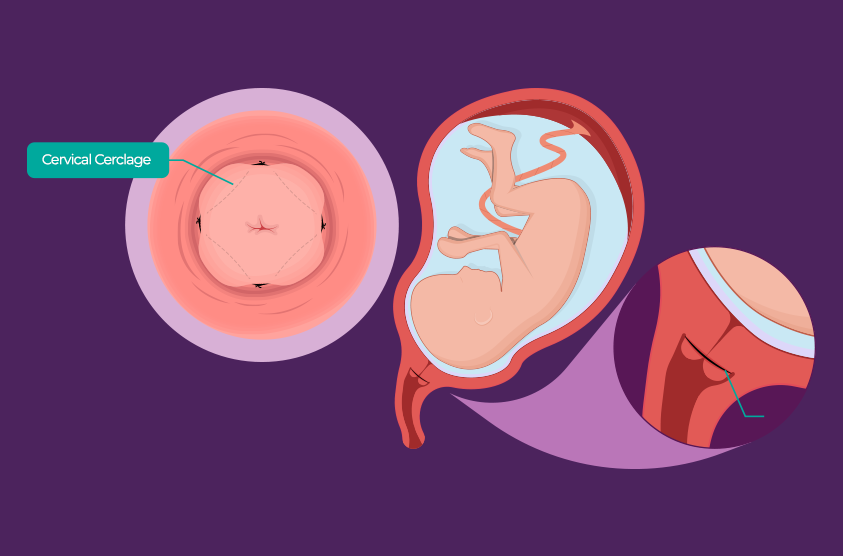- Fikriye Gedikoglu
- 0 Comments
In some cases, the risk of miscarriage or the threat of premature birth can increase significantly. In such special cases, cerclageis one of the important methods applied to protect the pregnancy. So what exactly is cerclage? Which expectant mothers is it applied to? When and how is it performed? We explained the cerclage application for you in all details.
What is Cerclage?
Cerclage is the medical term for cervical suture. The cervix (cervix) should normally be closed during pregnancy. However, in some women, the cervix may open prematurely before the end of pregnancy. This is called cervical insufficiency (cervical laxity).
With cerclage, a special stitch is applied to the cervix to prevent the loss of pregnancy in the early weeks or premature birth.
In which cases is cerclage performed?
Cerclage is not applied to every pregnant woman. It is generally preferred in the following special cases:
✅ Pregnant women diagnosed with cervical insufficiency
Expectant mothers who have experienced 2 or more previous painless, early miscarriages
Ultrasound measurement of a short cervix in the 2nd trimester of pregnancy (e.g. less than 25 mm)
Those with a history of miscarriage between 20-24 weeks in previous pregnancies
✅ Pregnant women who have started cervical dilatation but are not in labor (emergency cerclage)
If the cervix is open on examination but no water has yet come out and contractions have not started, emergency cerclage can be tried.
✅ Cervical shortening in twin or multiple pregnancies
If the cervix shortens in such high-risk pregnancies, cerclage may be considered to prevent preterm delivery.
When is cerclage performed?
Cerclage is usually 12th to 14th weeks of pregnancy is performed in a planned manner. This type of cerclage is called “prophylactic” cerclage.
However, in some emergency situations (e.g. if the cervix has started to open) 16-24. emergency cerclage between weeks can be performed. Such interventions must be performed under the supervision of a specialist physician and after a detailed evaluation.
How is Cerclage Procedure Performed? Is It Painful?
Cerclage is usually performed with spinal anesthesia (lumbar anesthesia). The patient does not feel pain during the procedure. A strong ligature is made to the cervix with special suture material and the procedure takes 20-30 minutes on average.
The patient is usually discharged the same day or the next day. Rest is recommended for a few days and close follow-up is required throughout pregnancy.
What Should Be Considered After Cerclage?
- Rest: Bed rest is recommended for a few days after the procedure.
- Sexual intercourse: Generally prohibited.
- In cases of bleeding, pain, discharge, consult a doctor immediately.
- Regular ultrasound checks monitor the length of the cervix and pregnancy status.
When Is Cerclage Taken?
The cerclage suture is usually Week 36-37. is removed before labor starts. If labor starts early or water breaks, the stitch is removed immediately. If a caesarean section is planned, sometimes the stitches can also be removed during labor.
Is Healthy Birth Possible with Cerclage?
Yes, thanks to cerclage performed at the right time and under appropriate conditions, many women can safely continue their pregnancy and have a healthy birth. However, this process must be followed by an obstetrician.

